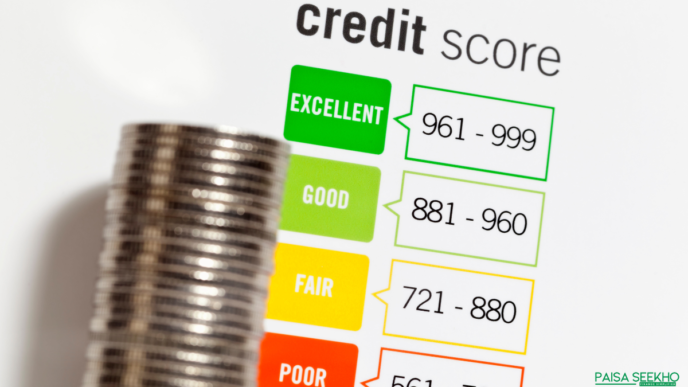Interest rates form the backbone of most financial decisions we make. If the rate on a savings account is high, you might be more inclined to park your money there. Conversely, if personal loan interest rates are on the rise, you may decide to postpone that big purchase. This is why understanding interest rates is so important.
For Indian households—especially millennials and Gen Z trying to balance living expenses, education loans, and future savings goals—interest rates can shift the trajectory of financial planning. Whether you’re looking for a housing loan interest rate that fits your monthly budget or a fixed deposit interest rate that helps your money grow, understanding these numbers gives you the clarity to make wise financial moves.
What Exactly Are Interest Rates?
An interest rate is essentially the cost of borrowing money. Lenders (like banks in India) charge interest in exchange for giving you access to funds, be it through a credit card, personal loan, or home loan. On the other side of the coin, banks pay you interest for keeping money in your savings account or fixed deposit—because you’re effectively lending money to the bank.
In a simplified sense:
- When borrowing (e.g., a personal loan), a higher interest rate means higher monthly EMIs and a bigger total repayment over time.
- When saving (e.g., in a savings account or FD), a higher interest rate means your money grows faster.
Key Terminology You Should Know When Understanding Interest Rates
- Principal: The initial amount of money borrowed or deposited. If you take a personal loan of INR 5 lakh, that’s your principal.
- Annual Percentage Rate (APR): The yearly interest rate, not just for banks abroad but sometimes used in Indian contexts. It can help compare different loan products in a standardised way.
- Compound Interest: Interest calculated on both the original principal and any accrued interest. This is how fixed deposits or recurring deposits typically grow.
- Simple Interest: Interest is calculated only on the principal, not on previously earned interest. Some short-term loans or certain bonds may use simple interest.
- EMI (Equated Monthly Instalment): The amount you pay each month to repay a loan. It includes both interest and a portion of the principal.
How Interest Rates Are Decided in India
In India, the Reserve Bank of India (RBI) plays a pivotal role in deciding the repo rate, which is the rate at which banks borrow money from the RBI. This repo rate heavily influences the interest rates that commercial banks in India (like SBI, HDFC Bank, ICICI Bank, etc.) offer to their customers—both for loans and deposits.
- RBI Monetary Policy:
- Every couple of months, the RBI’s Monetary Policy Committee (MPC) reviews economic indicators such as inflation, GDP growth, and money supply.
- Based on these indicators, the committee may raise, lower, or keep the repo rate unchanged to either stimulate economic growth or control inflation.
- Bank-Specific Factors:
- Each bank then adds its own margin to the RBI’s repo rate, creating what’s known as the MCLR (Marginal Cost of Funds-based Lending Rate) for loans.
- Therefore, if the RBI raises the repo rate by 50 basis points (i.e., 0.5%), you can expect interest rates on new loans and deposits to eventually rise as well—though the exact timing can vary from bank to bank.
- Market Competition & Customer Profile:
- Competition among banks can also affect interest rates. Sometimes, to attract new customers, certain banks might offer lower housing loan interest rates or more attractive fixed deposit interest rates—especially for senior citizens or new depositors.
How Interest Rates Affect Loans
Impact on EMI Calculation
Suppose you take out a home loan or car loan. Your monthly EMI depends on:
- The loan’s principal
- The interest rate
- The loan tenure
Formula for EMI (simplified)EMI=P×r(1+r)n(1+r)n−1\{EMI} = P \times \frac{r (1 + r)^n}{(1 + r)^n – 1}EMI=P×(1+r)n−1r(1+r)n
Where:
- PPP = Loan principal
- rrr = Monthly interest rate (annual rate divided by 12)
- nnn = Total number of EMIs (months)
If the loan interest rates increase, your EMI goes up unless you opt for a longer repayment tenure (which then increases the overall interest you pay).
Personal Loans: The Role of Credit Scores
For personal loan interest rates, banks often look at your credit score in India (commonly CIBIL score). A higher score means you’ve been responsible with credit in the past, so the bank may offer you a more favourable interest rate.
- Credit score above 750: You’re likely to get lower interest rates.
- Credit score below 650: You might find higher rates or even face loan rejections.
Housing Loans: Fixed vs. Floating Rates
For home loans, you can usually choose between:
- Fixed Rate Loan: The interest rate stays the same throughout the loan tenure. Though this offers predictability, the rate is often higher than a floating rate at the start, and you might miss out if market rates go down.
- Floating Rate Loan: The interest rate changes based on market conditions (driven by the repo rate, MCLR, etc.). You can benefit if interest rates drop, but your EMI can rise if they go up.
How Interest Rates Affect Savings
Savings Account Interest Rates
Most Indian banks provide savings account interest rates ranging from 2.5% to 4% or higher, although these rates can vary based on your balance or bank policies. High-inflation environments reduce the “real” returns on savings accounts, meaning even if your bank gives you 4%, if inflation is at 6%, the purchasing power of your money might still erode over time.
Fixed Deposits (FDs) and Recurring Deposits (RDs)
- Fixed Deposit Interest Rates can range from 5.5% to 7.5% (or more) in many banks, although these vary with market conditions. During times when the RBI hikes rates, banks typically raise FD rates to attract depositors.
- Recurring Deposits work similarly but let you deposit money at intervals (monthly, for example) instead of lump sums. They often carry similar interest rates to FDs.
Because FDs and RDs usually offer compound interest, you’ll earn interest on both the principal and the accrued interest, helping your wealth grow faster than a standard savings account.
Impact on Investments
- Debt Mutual Funds: When market interest rates rise, newly issued bonds in the market have higher coupon rates. Older bonds (with lower rates) become less attractive, potentially reducing the net asset value of some debt funds in the short term.
- Equity Investments: Rising interest rates can sometimes lead to a shift from equities to fixed-income instruments, as investors look for stable returns. This may or may not directly impact your long-term stock investments, but it’s useful to be aware of these market dynamics.
Balancing Loans and Savings When Rates Fluctuate
- Prioritise High-Interest Debt:
- If you have multiple loans (say a personal loan, credit card debt, and a car loan), try to pay down the highest-interest debt first. This frees up more of your monthly income in the long run.
- Refinance or Restructure Loans:
- If the RBI interest rate drops significantly, explore refinancing options for long-term loans like home loans. Moving from a higher fixed rate to a lower floating rate could save you a substantial amount.
- Lock In FD Rates When They’re Attractive:
- If banks start raising fixed deposit interest rates, consider locking in your money for a medium to long tenure if you won’t need it imminently. This lets you benefit from higher rates even if they later drop.
- Maintain Liquidity in Savings Accounts:
- While it’s tempting to move all funds to fixed deposits, remember that emergency funds need to be instantly accessible. Keep at least 3-6 months of expenses in a liquid account despite the lower savings account interest rate.
- Monitor the Repo Rate Announcements:
- Since the repo rate influences many aspects of personal finance, staying updated on the RBI’s announcements can help you decide whether it’s a good time to take on new debt or invest in certain instruments.
A Quick Comparison of Typical Interest Rates
Below is a hypothetical snapshot to illustrate how rates might vary (actual figures may differ depending on the bank and current RBI policy):
| Product | Approx. Interest Rate Range | Notes |
|---|---|---|
| Savings Account | 2.5% – 4% p.a. | May vary with account balance or specific bank offers |
| Fixed Deposit (1-5 yrs) | 5.5% – 7.5% p.a. | Senior citizens may get an extra 0.5% on FDs |
| Recurring Deposit | 5.5% – 7.5% p.a. | Similar rates to FDs; more flexible monthly deposits |
| Home Loan | 7% – 10.5% p.a. | Rates could be fixed or floating; credit score matters |
| Personal Loan | 10% – 20% p.a. | Depends heavily on credit score and income stability |
| Car Loan | 8% – 12% p.a. | Often includes processing fees and other charges |
Source for ranges: Averages compiled from major banks in India such as SBI, HDFC, and ICICI (check their official websites or RBI’s database for the latest data).
Practical Tips for Managing Interest Rates
- Use Online Calculators:
- Websites like Paisa Seekho, or your bank’s official portal often provide EMI calculators and FD calculators. Play around with interest rates and tenures to see how small changes impact your repayments or returns.
- Stay Updated on Economic Trends:
- A sharp rise in inflation usually pushes the RBI to increase the repo rate. By staying ahead of these trends, you can make timely decisions—like paying off variable-rate loans sooner or locking in a higher interest FD.
- Diversify Your Savings and Investments:
- Don’t put all your savings in one basket. Instead, split between a secure FD, a medium-risk debt fund, and some equity investments—depending on your risk profile. This helps cushion you against rate volatility.
- Build a Strong Credit Score:
- Always pay credit card bills on time and avoid defaulting on any loan. A better credit score generally paves the way to lower loan interest rates, saving you money over the life of the loan.
- Ask for Concessions:
- Some banks offer reduced processing fees or lower rates for loyal customers or professionals in stable fields like IT or government employment. Always enquire about special deals.
Conclusion
Interest rates might sound like a technical concept, but they have a very real impact on our day-to-day life—from the monthly EMI we pay on our home loan to the returns on our savings and investments. In India, the RBI interest rate (especially the repo rate) sets the tone for how banks price their loans and deposits.
For millennials and Gen Z, who often need to juggle loans for education, vehicles, or housing alongside emerging career paths, understanding how interest rates in India function can lead to smarter choices. Even small differences in rates can collectively make a significant difference over time. Staying informed and proactive—by refinancing high-interest debts, locking in good FD rates, and maintaining healthy credit habits—can help you get the most out of both loan interest rates and savings account interest rates.
At Paisa Seekho, our aim is to demystify the complexities of personal finance so everyday Indians can secure and grow their wealth. As you navigate the ever-shifting tide of interest rates, remember that informed decisions and consistent planning can keep you on course towards your financial goals.
FAQs
How often do interest rates change in India?
The RBI’s Monetary Policy Committee (MPC) typically meets every two months. Any changes to the repo rate announced during these meetings can influence commercial banks’ interest rates. That said, banks might not always adjust their rates immediately. Factors like market competition and individual bank strategies also play a role.
Why are interest rates on personal loans so high compared to home loans?
Personal loans are unsecured, meaning banks don’t have collateral to fall back on if you default. Without collateral, the risk for lenders is higher. To offset this risk, they charge higher rates. Conversely, a home loan is a secured loan—your property acts as collateral, allowing banks to provide comparatively lower interest rates.
Should I choose a fixed or floating interest rate for my home loan?
It depends on your risk tolerance and forecast of interest rate movements.
- Fixed Rate: Predictable monthly payments, which can be beneficial if you expect rates to rise significantly.
- Floating Rate: Typically lower initial rates, and you benefit if interest rates in India dip further. However, be prepared for potential fluctuations in your EMI if rates climb.
How do I calculate the EMI for different interest rates before applying for a loan?
You can use an EMI calculator available on most bank websites or on personal finance platforms like Paisaseekho. Input the loan amount, tenure, and interest rate. The calculator will instantly show your monthly EMI, total interest payable, and total amount repaid over the entire tenure.
H3: Can I really negotiate interest rates with the bank?
Yes, in some cases. If you have an excellent credit score (typically above 750) and a stable income, banks might offer you competitive rates. Similarly, if you already have a long-standing relationship with a bank—like maintaining multiple accounts or investments—they may offer better terms. It never hurts to ask, especially if you can present evidence of your financial stability.
H3: Where should I keep my emergency fund to get the best interest?
Emergency funds should be liquid and accessible. Most experts recommend keeping 3-6 months’ worth of expenses in a savings account or a short-term FD that you can break easily, even though the interest might be lower than long-term options. Accessibility is key—especially during emergencies—so it’s best not to lock your entire emergency corpus in long-term FDs or instruments with penalties for early withdrawal.
By understanding how interest rates in India are set and how they ripple through the financial ecosystem—whether you’re borrowing via a personal loan or saving through a fixed deposit—you’ll be better positioned to make decisions that promote long-term financial health. If you want to dive deeper or need personalised advice, consider reaching out to Paisa Seekho for more resources, tips, and tools that help you stay on top of India’s ever-evolving financial landscape.













